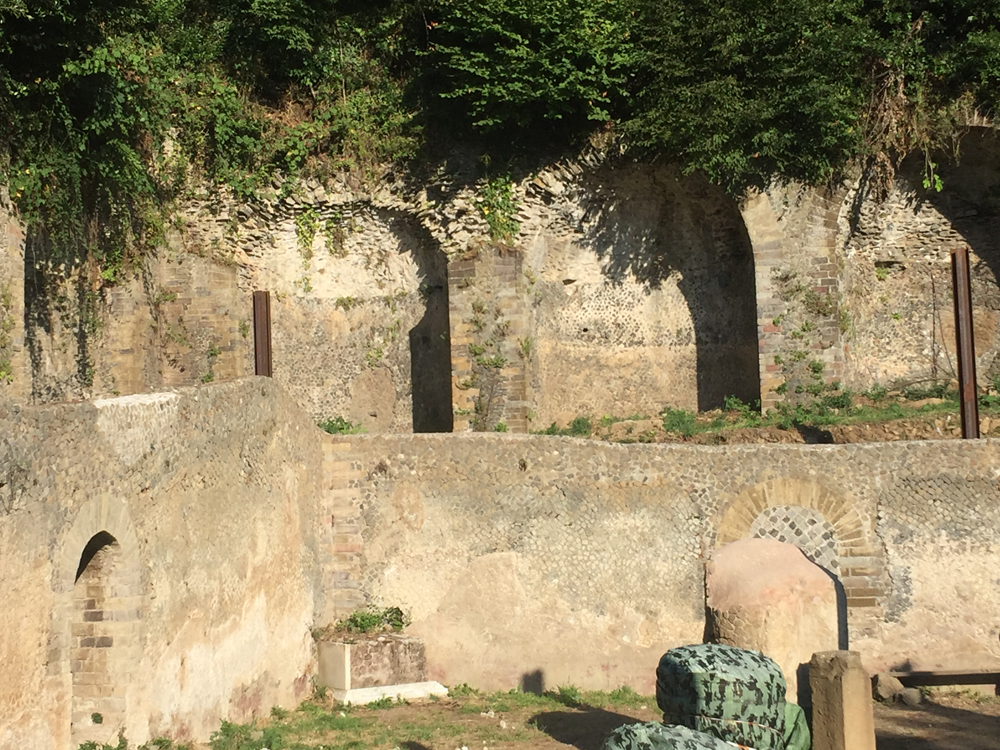The Sacred Grove: The Sanctuary of Diana Nemorensis
Nemi is most known for little sweet strawberries, its picturesque town and the
Museo delle Navi Romane. However, the remains of a most fascinating, mysterious and historic sanctuary lie right off the shores of Lake Nemi.
Dedicated to the goddess Diana, this sanctuary has roots dating back to the Bronze Age and was one of the main spiritual centers of the area. Covering over 45,000 square meters, it includes the remains of her temple, a theatre, a nymphaeum, as well as the so called "celle donarie" (rooms where many votive statuettes where found).
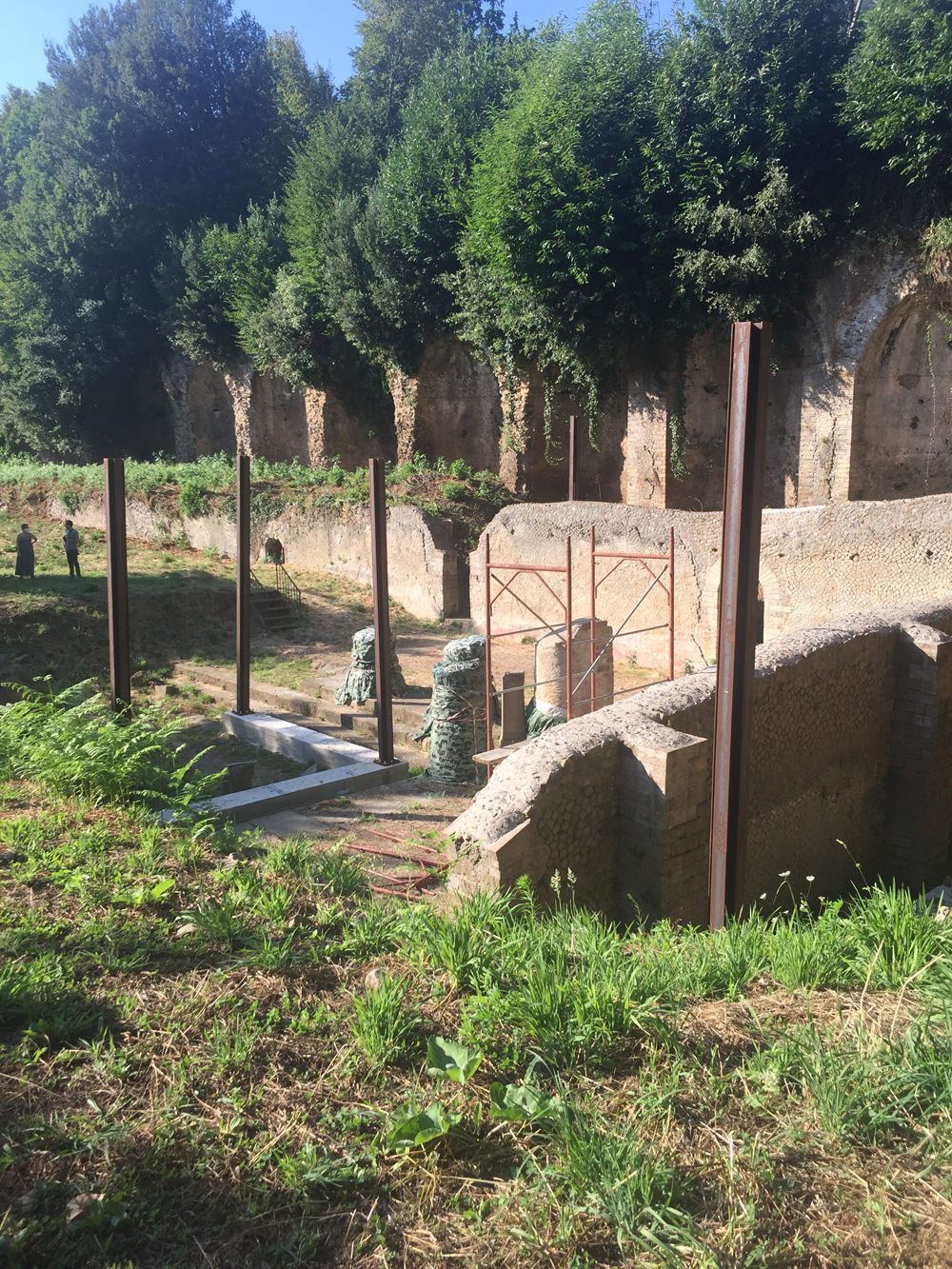
In addition to the ancient ruins, it's the fascinating myths and history of the place that make it so interesting. It was the primary sanctuary dedicated to Diana Nemorensis, or "Diana of the Wood" and the political and religious center for the Lega Latina.
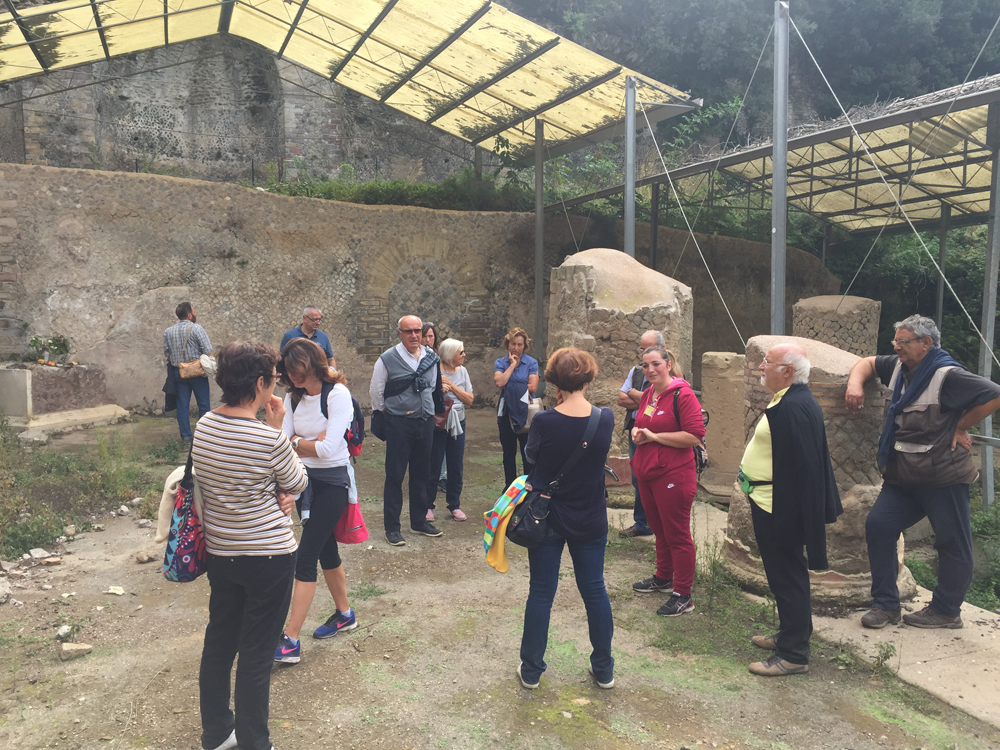
Diana takes on different roles and her influence is evident in Nemi and Lake Nemi, the latter also referred to as Speculum Dianae or “Diana’s Mirror".
In addition to Diana Nemorensis, she is the goddess of the hunt, wild animals, fertility, and the moon. Celebrated as a huntress and patron of hunters, she was also worshiped by men and women desiring a pregnancy, a safe delivery and other health benefits and blessings.

During excavations of the sanctuary, votive statuettes were found in the "celle donarie"; further proving her diverse roles as well as the sheer number of faithful pilgrims leaving offerings. Some of these votive offerings can be viewed at the nearby Museo delle Navi Romane (photo below).

On a darker note, Diana’s cult practiced violent religious rites. Legend goes her high priest was Rex Nemorensis, “king of the sacred grove”, a fugitive slave who succeeded his predecessor after challenging, and surviving, him in a fight to the death. Before the challenge, the lore claims he had to first pick a mistletoe branch from a guarded oak tree in the sacred grove. He would remain king as long as he could defeat his challengers and the fight resembled gladiatorial combat before an audience.
The Sanctuary was active until the 4th century AD, and eventually abandoned with the advent of Christianity, the Edict of Thessalonica and persecution of pagans in the late Roman Empire.
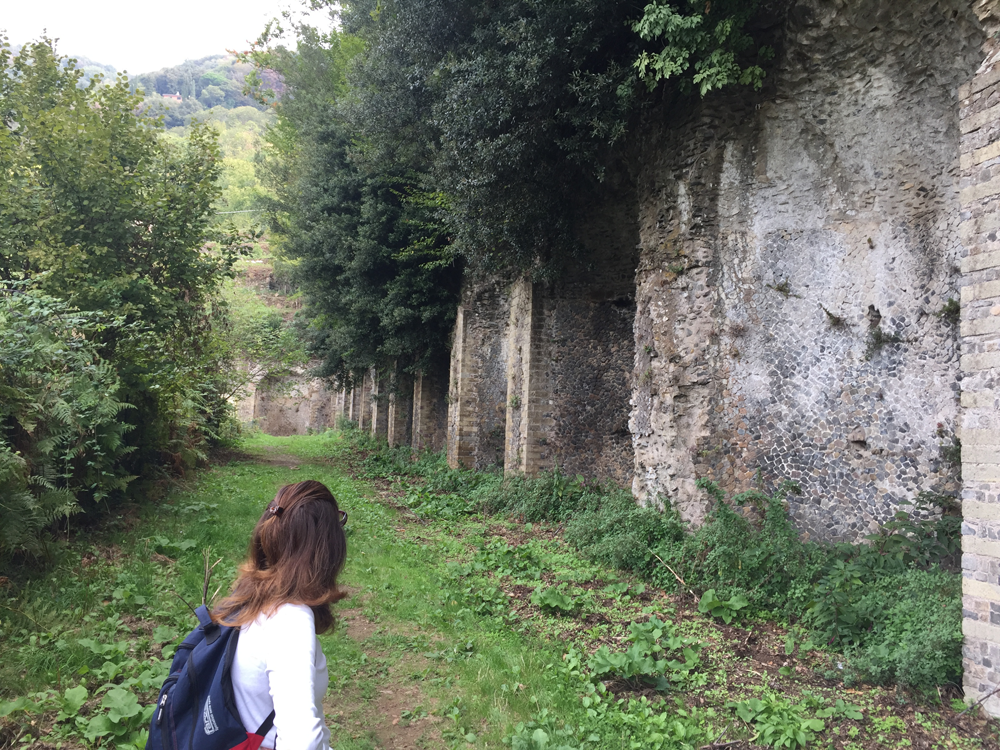
Excavations
Excavations of the area have been ongoing since the 1700’s, but often what is found is reburied to protect the structure. Of late, excavations are carried out by the University of Munich and the University of Perugia.
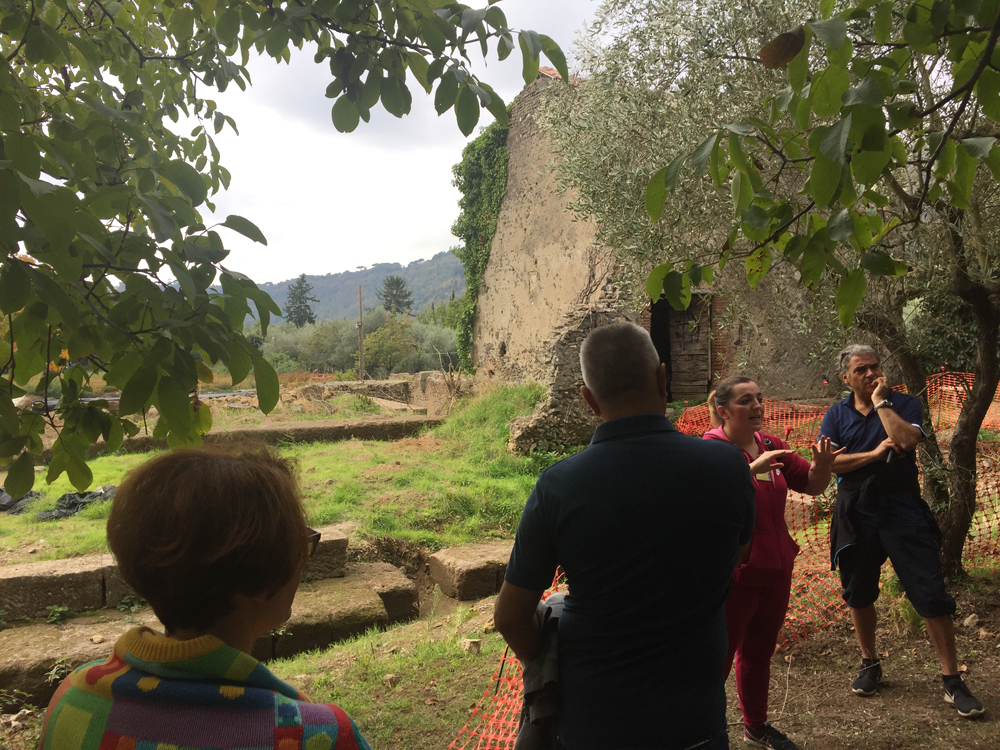
What you can see:
In addition to the impressive foundations with semicircular niches and a Doric portico with red-plastered columns, there are partial rooms (the" celle donarie" ), one of which having an intact mosaic floor.

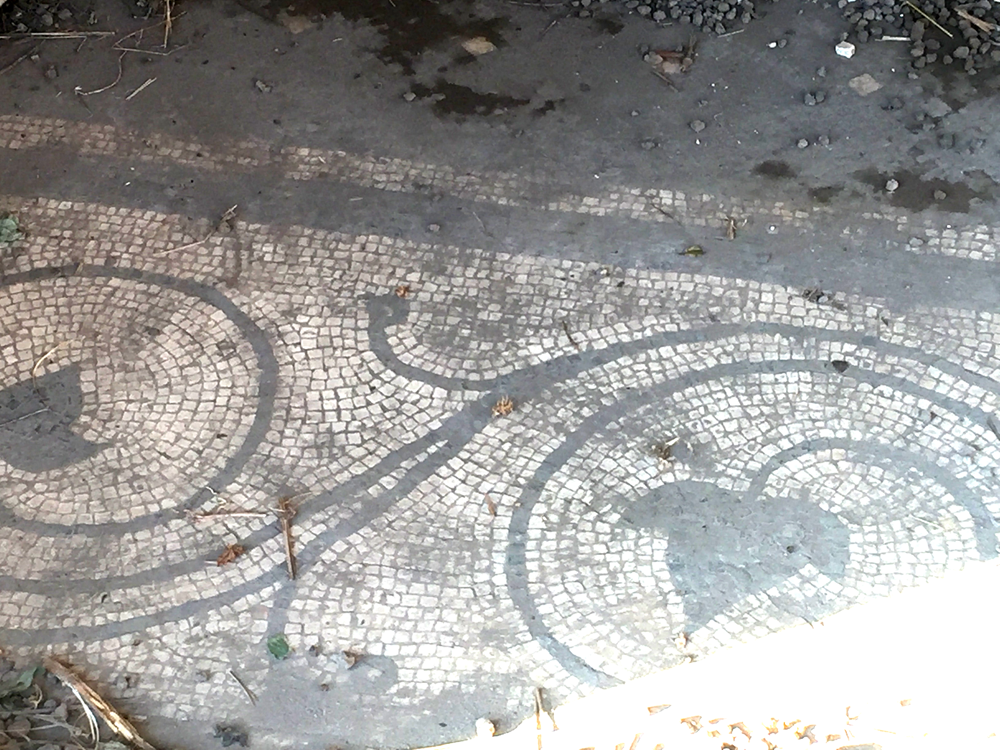
How to visit:
The sanctuary is located half on private property and half on public land.
The public, or "niche side" entrance is behind locked gates, as the sanctuary can only be visited by contacting the Soprintendenza Archeologia, Belle Arti e Paesaggio of Roma. Guided tours are organized once every 2-3 months and are advertised by the Soprintendenza ABAP-RM-MET, the Municipality of Nemi and/or local archaeological associations such as GAALNA
These tours are usually free, in Italian language and a most informative way to see the sanctuary.
This entrance is right off the ring road which surrounds the lake, following the signs for Azienda Agricola Il Nemus and walking past their outdoor Teatro di Paglia.
You may see other signs around the lake directing you to the Temple of Diana which are in a different direction than the indications above; owners of an agriturismo (holiday farm) near the temple have installed these. They offer the chance to see the site from their property, usually by a fee or required use of their facilities. Authorities claim this is not permitted nor recommended, one reason being safety measures are not followed, use your own discretion.
Some visitors also often go on their own though holes or passable spaces through the locked gates. You can see their evidence by offerings left on the altar and it is rumored neo-pagans and those seeking fertility have ceremonies during the night. Again, authorities state these types of visits are not advised and border on being illegal, use your own discretion.
I Nemoralia
A most interesting time to visit is in August, when there is I Nemoralia, also known as the Festival of Diana. Once a holiday celebrated by the ancient Romans and held in the Sanctuary of Diana in honor of the goddess, the tradition continues today with a multi-day festival of events. In the 2020 edition, you could witness re-enactments of popular ceremonies at the sanctuary.

First published: September 25, 2020
Latest update: October 7, 2020
Dedicated to the goddess Diana, this sanctuary has roots dating back to the Bronze Age and was one of the main spiritual centers of the area. Covering over 45,000 square meters, it includes the remains of her temple, a theatre, a nymphaeum, as well as the so called "celle donarie" (rooms where many votive statuettes where found).

In addition to the ancient ruins, it's the fascinating myths and history of the place that make it so interesting. It was the primary sanctuary dedicated to Diana Nemorensis, or "Diana of the Wood" and the political and religious center for the Lega Latina.

Diana takes on different roles and her influence is evident in Nemi and Lake Nemi, the latter also referred to as Speculum Dianae or “Diana’s Mirror".
In addition to Diana Nemorensis, she is the goddess of the hunt, wild animals, fertility, and the moon. Celebrated as a huntress and patron of hunters, she was also worshiped by men and women desiring a pregnancy, a safe delivery and other health benefits and blessings.

During excavations of the sanctuary, votive statuettes were found in the "celle donarie"; further proving her diverse roles as well as the sheer number of faithful pilgrims leaving offerings. Some of these votive offerings can be viewed at the nearby Museo delle Navi Romane (photo below).

On a darker note, Diana’s cult practiced violent religious rites. Legend goes her high priest was Rex Nemorensis, “king of the sacred grove”, a fugitive slave who succeeded his predecessor after challenging, and surviving, him in a fight to the death. Before the challenge, the lore claims he had to first pick a mistletoe branch from a guarded oak tree in the sacred grove. He would remain king as long as he could defeat his challengers and the fight resembled gladiatorial combat before an audience.
The Sanctuary was active until the 4th century AD, and eventually abandoned with the advent of Christianity, the Edict of Thessalonica and persecution of pagans in the late Roman Empire.

Excavations
Excavations of the area have been ongoing since the 1700’s, but often what is found is reburied to protect the structure. Of late, excavations are carried out by the University of Munich and the University of Perugia.

What you can see:
In addition to the impressive foundations with semicircular niches and a Doric portico with red-plastered columns, there are partial rooms (the" celle donarie" ), one of which having an intact mosaic floor.


How to visit:
The sanctuary is located half on private property and half on public land.
The public, or "niche side" entrance is behind locked gates, as the sanctuary can only be visited by contacting the Soprintendenza Archeologia, Belle Arti e Paesaggio of Roma. Guided tours are organized once every 2-3 months and are advertised by the Soprintendenza ABAP-RM-MET, the Municipality of Nemi and/or local archaeological associations such as GAALNA
These tours are usually free, in Italian language and a most informative way to see the sanctuary.
This entrance is right off the ring road which surrounds the lake, following the signs for Azienda Agricola Il Nemus and walking past their outdoor Teatro di Paglia.
You may see other signs around the lake directing you to the Temple of Diana which are in a different direction than the indications above; owners of an agriturismo (holiday farm) near the temple have installed these. They offer the chance to see the site from their property, usually by a fee or required use of their facilities. Authorities claim this is not permitted nor recommended, one reason being safety measures are not followed, use your own discretion.
Some visitors also often go on their own though holes or passable spaces through the locked gates. You can see their evidence by offerings left on the altar and it is rumored neo-pagans and those seeking fertility have ceremonies during the night. Again, authorities state these types of visits are not advised and border on being illegal, use your own discretion.
I Nemoralia
A most interesting time to visit is in August, when there is I Nemoralia, also known as the Festival of Diana. Once a holiday celebrated by the ancient Romans and held in the Sanctuary of Diana in honor of the goddess, the tradition continues today with a multi-day festival of events. In the 2020 edition, you could witness re-enactments of popular ceremonies at the sanctuary.

First published: September 25, 2020
Latest update: October 7, 2020
Share this page

